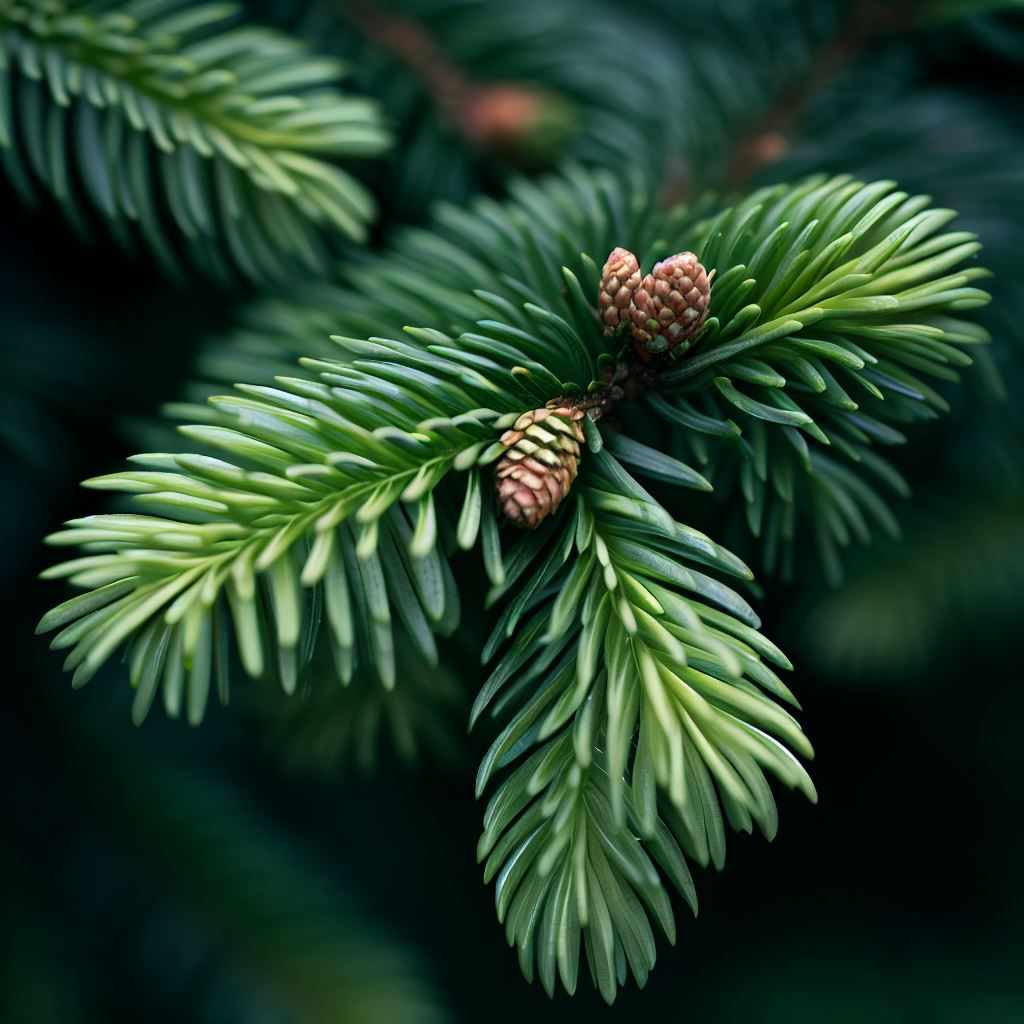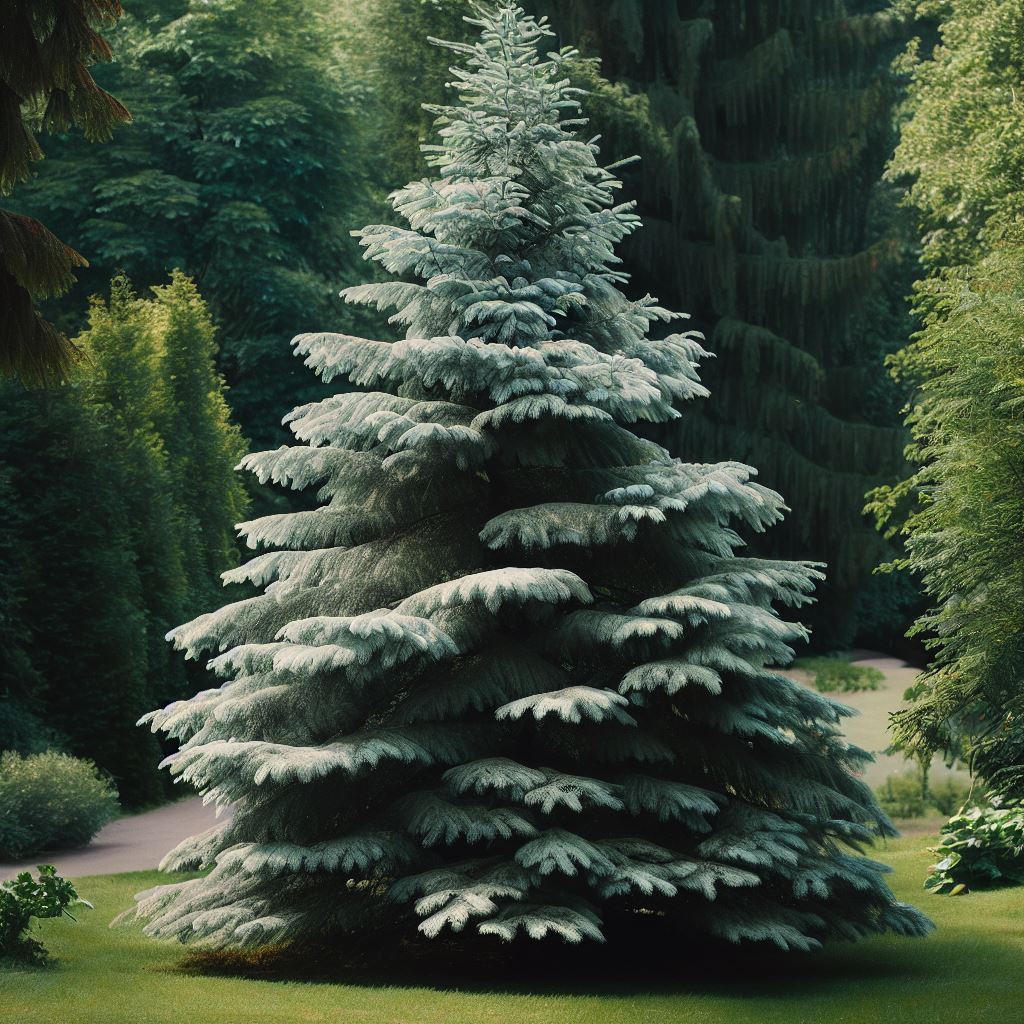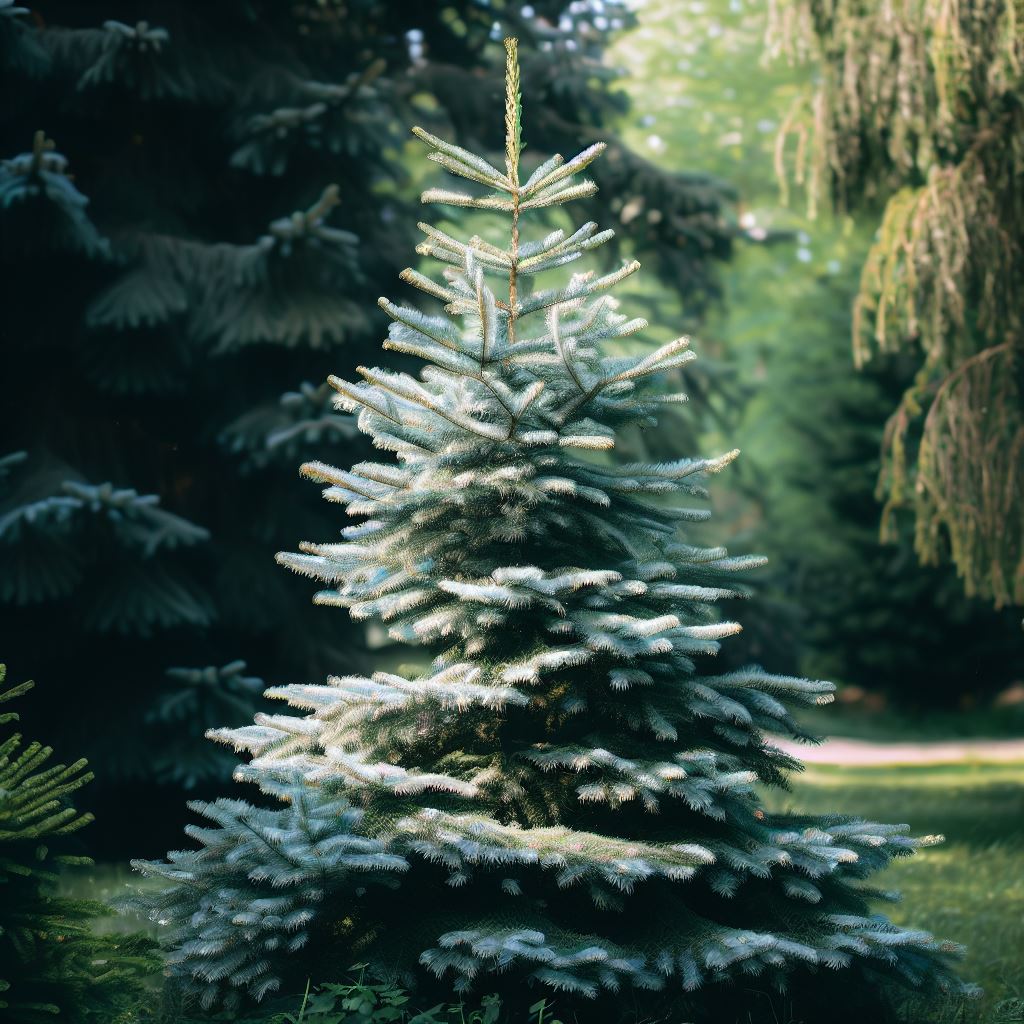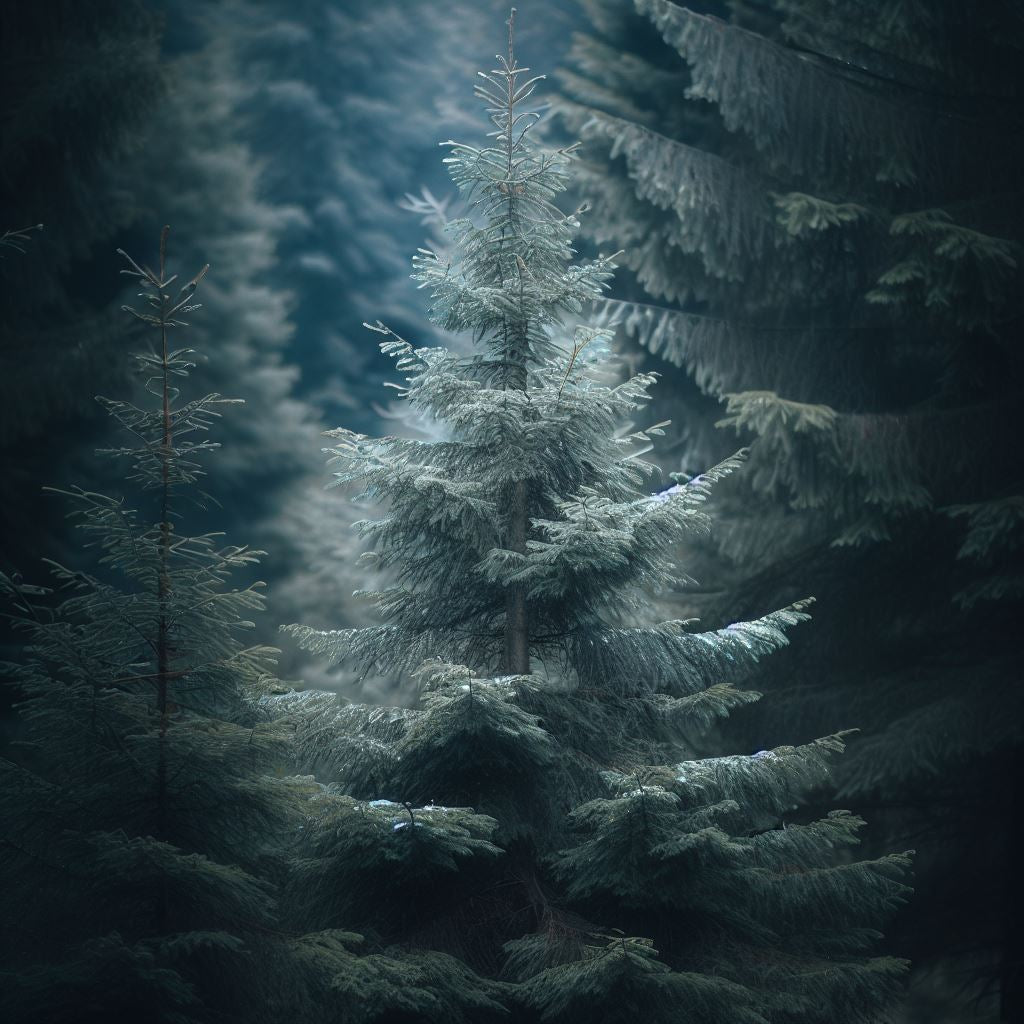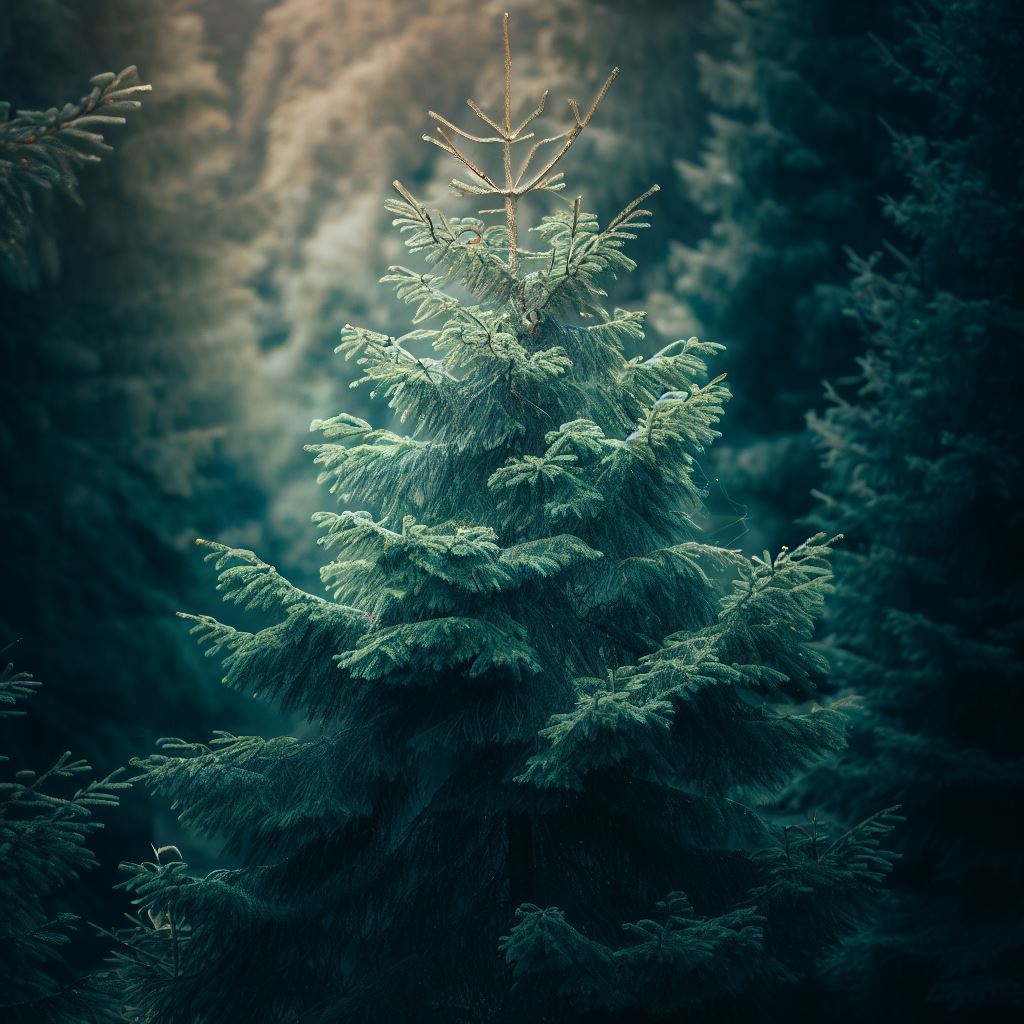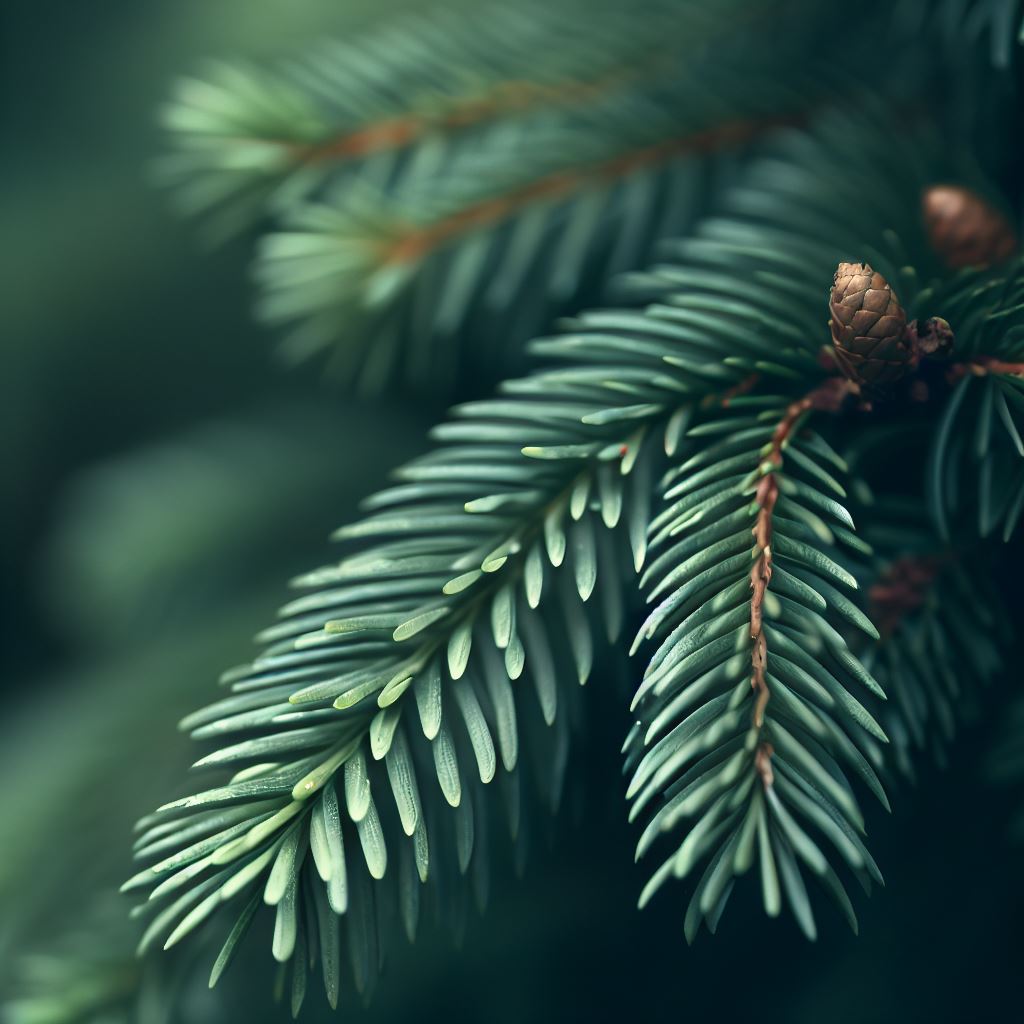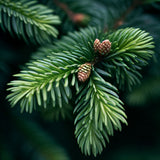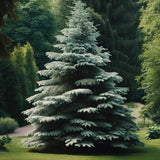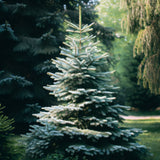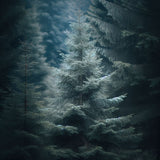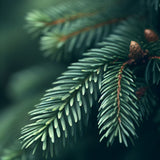Abies alba (Common Silver Fir, European Silver Fir)
Abies alba (Common Silver Fir, European Silver Fir) is a majestic coniferous tree native to Europe. This evergreen tree belongs to the Pinaceae family and is highly valued for its timber and ornamental qualities.
Appearance:
Size: Common Silver Firs are large trees that can reach heights of 130 to 165 feet (40 to 50 meters) in the wild. In cultivation, they are typically smaller, but they can still grow to be substantial. Shape: The tree has a tall, slender, and conical shape with a straight trunk. Its branches tend to be horizontal and layered, forming a symmetrical crown.
Leaves: Needles: The needles of the European Silver Fir are flat, needle-like, and arranged spirally on the branches. They are typically dark green on the upper surface with a silvery underside, which gives the tree its common name.
Cones: Male Cones: The male cones are small, reddish, and clustered near the tips of branches. They release pollen during the spring. Female Cones: The female cones are larger, cylindrical, and upright. They start off green but mature to a purplish-brown color. These cones can grow up to 6 inches (15 cm) in length and are positioned upright on the upper branches.
Bark: The bark of the Common Silver Fir is smooth and grayish-brown when young. As the tree matures, it becomes darker and develops furrows and ridges.
Habitat: This tree species is primarily found in mountainous regions throughout Europe, including the Alps, Carpathians, and the Pyrenees. It prefers cool, moist, and well-drained soils and is often associated with other conifers such as spruce and pine.
Ecological Significance: The Common Silver Fir plays an important ecological role by providing habitat and food for various wildlife species. Its seeds are a food source for birds and small mammals. It also helps stabilize soils on mountain slopes and contributes to watershed protection.
Cultural and Economic Uses: The wood of the European Silver Fir is highly valued for its quality and is used in construction, furniture making, and woodworking. In landscaping and horticulture, it is sometimes planted as an ornamental tree for its attractive appearance.
Conservation Status: In some regions, the Common Silver Fir is threatened due to habitat loss and overharvesting. Conservation efforts are in place to protect and sustainably manage populations.
Cultivation: Common Silver Firs are often grown in parks and gardens for their aesthetic appeal. They require well-drained soil and a cool, humid climate for optimal growth. In summary, the Abies alba, or Common Silver Fir, is a remarkable European tree known for its striking appearance, valuable timber, and ecological significance in mountainous regions. Its distinctive silver-underside needles and stately form make it a notable addition to both natural landscapes and cultivated gardens
Botanical Name : Abies alba
Common Name : Common Silver Fir, European Silver Fir
Height : 130-165 ft
Spread : 20-40 ft
Germination Info : Seed require 30-60 days cold moist stratification
Hardiness zone : 4-8
Average seed per ounce : Approx. 600

